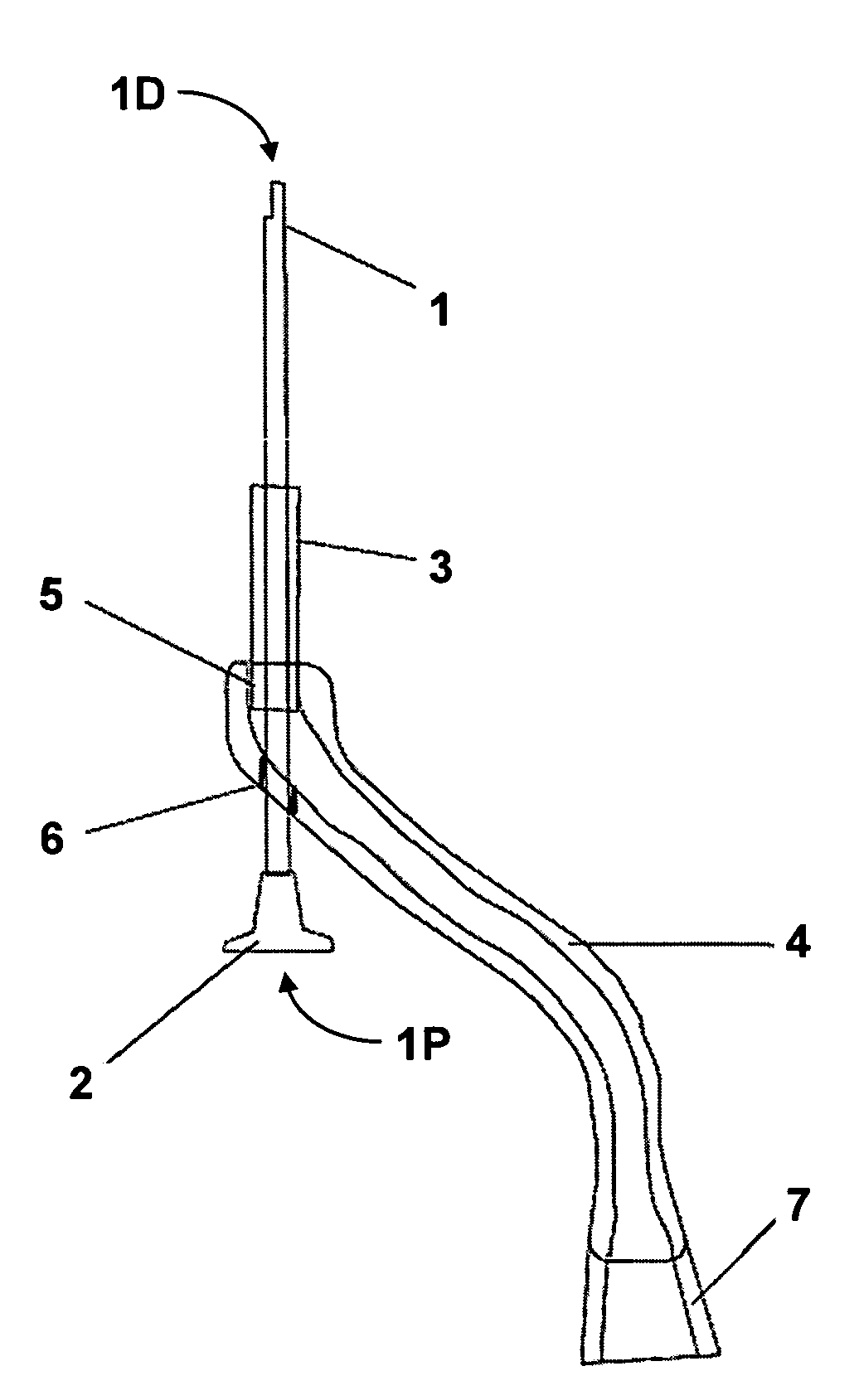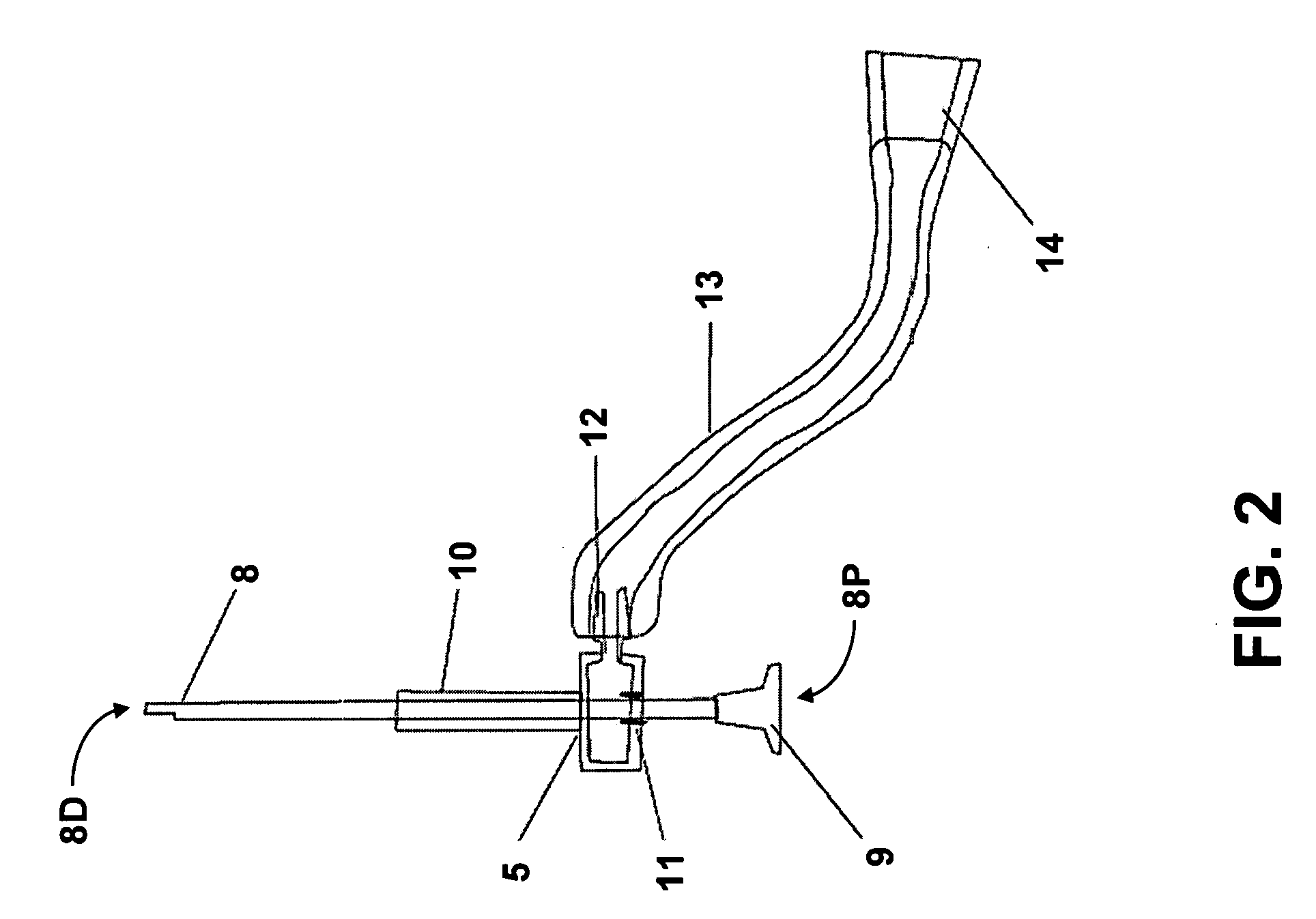Irrigation and Aspiration Device
a technology of irrigator and aspiration device, which is applied in the field of instruments for use in medicine and dentistry, can solve the problems of root canal perforation, apical perforation, and apical perforation of the apex of the root canal, and achieve the effects of preventing splashback, and reducing the risk of infection
- Summary
- Abstract
- Description
- Claims
- Application Information
AI Technical Summary
Benefits of technology
Problems solved by technology
Method used
Image
Examples
Embodiment Construction
[0033]With reference now to FIGS. 1 to 10, the irrigation and aspiration device of the present invention is described. The irrigation and aspiration device comprises an irrigation probe, or cannula, and an aspiration sleeve that ensheathes the probe. The device has a distal end and a proximal end. The aspiration sleeve can prevent the insertion of the distal end of the probe beyond a desired distance, thereby preventing perforation of the apex of a root canal or wound, and also aspirates any excess irrigation solution and free debris. The distal stop end of the aspiration sleeve can have a substantially greater diameter than the diameter of the distal end of the probe. Thus, the stop end of the sleeve can rest on the occlusal surface of the crown of a tooth or wound while the distal end of the probe extends the desired distance within the root canal or wound. The irrigation and aspiration device can be used for convenient delivery of a variety of different liquids to a root canal, p...
PUM
 Login to View More
Login to View More Abstract
Description
Claims
Application Information
 Login to View More
Login to View More - R&D
- Intellectual Property
- Life Sciences
- Materials
- Tech Scout
- Unparalleled Data Quality
- Higher Quality Content
- 60% Fewer Hallucinations
Browse by: Latest US Patents, China's latest patents, Technical Efficacy Thesaurus, Application Domain, Technology Topic, Popular Technical Reports.
© 2025 PatSnap. All rights reserved.Legal|Privacy policy|Modern Slavery Act Transparency Statement|Sitemap|About US| Contact US: help@patsnap.com



